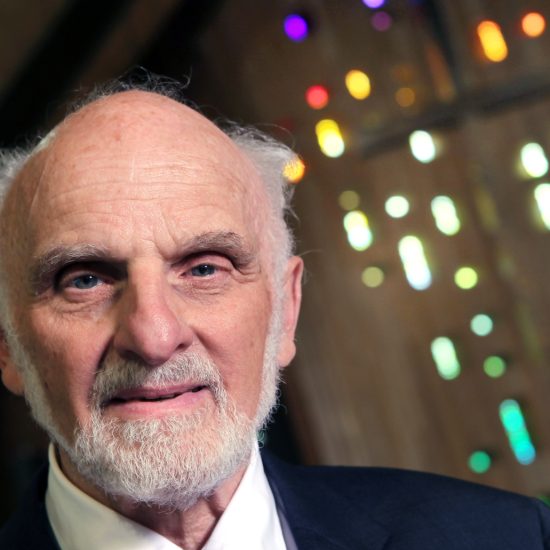

BEING REAL: The Apostle Paul’s Hardship Narratives and the Stories We Tell Today. By Philip Plyming. London, UK: SCM Press, 2023. ix + 149 pages.
People either love or hate Paul or so it seems. There are many people, usually not scholars, who believe Paul messed up the religion of Jesus. They believe this is true even though Paul’s letters predate the Gospels, perhaps by decades (depending on how you date things). While Paul tells us little about the life of Jesus, these letters were written as close to the life of Jesus as any source we have. While I recognize there are problems with some of what Paul espouses — though sometimes we can duck the question by attributing certain letters to someone else (as with the Pastorals) — there is much to learn from Paul. That is because his letters are often very personal. That is because they are letters, not essays, sermons, or biographies. In recent years there has been quite a bit of rethinking concerning Paul and his message, including the overemphasis placed on the role that justification by faith plays in his theology.

Robert D. Cornwall
On a personal note, the Pauline letters I have found to be the most helpful and intriguing are the Corinthian letters. There are some oddities in these letters, but they reflect a pastor’s attempt to address real concerns that afflicted this diverse congregation. I’ve often suggested that if you want to restore the New Testament church to its golden age, beware of the lesson of the Corinthian church. The truth is, there is much about these two letters that speak to our current situation.
In Being Real: The Apostle Paul’s Hardship Narratives and the Stories We Tell Today, Philip Plyming, Dean of Durham Cathedral and former Warden of Cranmer Hall, Durham University, connects Paul’s life experience and the letters he writes to the Corinthians to the ways we tell stories today, especially through social media. He divides the book into two parts. Part One explores the situation at Corinth and its impact on the development of the congregation. If you know little about Corinth, this is an excellent introduction. He also tells us about how Paul used his own story of hardship, something he doesn’t do elsewhere, to counteract a certain perspective present in the congregation, a perspective that reflects the social-cultural context of the Corinthian congregation. Plyming writes that as he read the two Corinthian letters over the years, he has “really appreciated Paul’s honesty and openness.” He points out how Paul was willing to acknowledge the challenges he faced in living the Christian life. He offers Paul’s willingness to be open about these challenges in contrast to his observation of a contemporary “pressure to emphasize the positive aspects of our Christian experience” (p. 3). I know the feeling; we do feel pressured to give a positive vibe. What Paul’s letters do is show us a way of telling hard stories. The question is why does Paul devote so much attention to hardship in these particular letters?
Plyming begins his exploration of Paul’s attempt to be real in Chapter 1, which is titled “The Story of Corinth: A City of Success.” In this chapter, Plyming shares how this ancient city had been destroyed and then rebuilt by the Romans, such that it was a cosmopolitan economic powerhouse. He compares it to modern Shanghai. When Paul started the congregation in Corinth, the city was at its zenith. It was home to upwardly mobile people who prized success. Therefore, showing any signs of weakness was not acceptable. It was a city of social fluidity, where a person (mostly males) could rise from slavery to power. As you might imagine, it was also a place of great “status anxiety.” The higher you might rise on the social ladder the more conscious you would be of your status and the possibility of falling from your new perch. This ability to climb the social ladder was accompanied by a culture of “self-promotion.” We can still see signs of self-promotion in the streets of ancient Corinth. What we see from the archaeological finds is that if you rose to the heights, you wanted to display your achievements. Thus, what we see here is a valuation of strength. To quote Vince Lombardi, winning is everything. One of the paths to glory is through rhetoric, such that the residents of this city valued not only what was said, but how it was said. Style was as important as content in public speaking, and venues were present that allowed residents and visitors to display their prowess at speaking. What Paul encountered as he visited Corinth was a city that valued success over everything else. The question then has to do with how that affected the life of the Corinthian church.
Chapter 2 is titled “Walking in a Worldly Way.” After laying out the cultural context in which the Corinthian church existed, in this chapter Plyming shares how these cultural values bled into congregational life. To understand the dynamics of this congregation’s existence, we need to understand that the situation in Corinth involved a radical social experiment unique to the era. That experiment involved taking down barriers of separation between male and female, Jew and Gentile, rich and poor, slave and free. This occurred because Paul preached a message of radical welcome. This led to the creation of a rather diverse Christian community. It is clear that Paul wasn’t a proponent of the homogeneous principle that the church growth people offered up in the last several decades. Nowhere else in that city did such a diverse community gather. Since this was something unique, problems quickly emerged leading to division, power plays, and more. Standing at the center of all of this was the larger community’s valuation of success. It appears that Paul didn’t measure up. In the estimation of many, Paul appeared to be rather weak in his speaking and body. Because he didn’t measure up to their expectations, they opened themselves to super-apostles, people who demonstrated power and success. Again, Plyming warns us against looking down on this congregation because many of the same realities present there are present in our society and churches today.
So how does Paul respond? In Chapter 3, Plyming shows how Paul uses his own stories of suffering as a way of countering the narrative of success. Paul tells the Corinthians that while he suffered, God was present amid that suffering. He could have focused on his successes, but that would have only fed the Corinthian mode of storytelling. We find throughout these letters that Paul contrasts his hardship stories with the Corinthian embrace of success and power. He speaks of physical, emotional, and social suffering. Despite the suffering, Paul offered a word of hope because he found God’s grace to be sufficient. Again, the question is why Paul tells these stories, after all, they are not told to gain applause because the Corinthians don’t value weakness. Plyming ultimately answers the question in Chapter 4, which speaks of “God’s Cross-Shaped Work.” Whereas the Corinthians took pride in their power, Paul pointed to the cross and found God at work in the cross. Paul sees the power of God on display in the cross, such that he identifies himself with the cross. He suggests that God’s presence was on display in unusual places, such as among the slaves and others on the margins. Thus, “For Paul the cross of Christ is not just an event concerning Jesus that he tells people about. For Paul the cross is also something he models in his own speaking.” (p. 63).
In Chapter 5, Plyming pivots from Corinth to the present. He addresses the way we tell stories, recognizing that “stories tell us where we have come from, and what we value today” (p. 75). Much of what we read in the rest of the book deals with the way we present ourselves on social media. Plyming confesses he’s not an expert in the area of social media, so he draws on others who have more expertise. What makes this part of the book so intriguing is the way he connects Paul’s words to the Corinthians with our context. We tell lots of different stories on social media, most of which are not focused on significant things. Thus, “social media enables us to share our everyday stories (however apparently trivial) with a wide audience” (p. 77). It is important to note that this is not an anti-social media book. Rather, Plyming invites us to look at the way we tell stories and the pressures we face to tell positive stories about ourselves. The thing about it is that though we are largely in control of how our stories are told we face pressures to focus on the positive. There is a lot of connective tissue with the Corinthian situation. So, we use social media to ingratiate ourselves with our readers or we might present ourselves in ways to make others like us.
We also might try to intimidate others. Our stories might not cause fear, but they can be used to induce awe. Look at me and my family, are we not better than you? Of course, we can’t forget about self-promotion, which was a prominent issue in Corinth (as an author I feel the pressure to self-promote because if I don’t promote myself, who will?). We might use social media for what Plyming calls “exemplification.” That is, we might use social media to invite others to follow our example. Put negatively, that would involve “virtue-signaling.” Preachers know this from experience — it’s Saturday, a problematic event has taken place, and the “virtue-signaling” preacher proclaims that if we don’t throw out our sermon and focus on this latest crisis, the people in the church should walk out on us. Finally, there is supplication or asking for help. Of these, the most common are ingratiation and self-promotion. I can understand how this might be true, for I have been implicated in several categories. Ultimately, often we feel the pressure to look happy and feel great! What happens when we do this is we create a differentiation between the real me and the online me. That’s because we live in a culture that values the positive. But how might we tell our stories as Christians if we live as most of us do in the world of social media? To what degree does our cultural context influence the way we tell the Christian story? Might we exhibit a certain vulnerability (be careful in revealing information about your family members)?
Having laid out the current context of storytelling in Chapter 5, when we turn to Chapter 6 we find Plyming inviting us to view our stories through the lens of the cross of Christ, much as Paul did. Now the point is not to ask what Paul would do in a situation, but rather to heed his call to look at things through the cross. Here we’re invited to embrace weakness and to use that when appropriate. The point here is really to look at life in such a way that weakness is not seen as contrary to Christian life. In other words, here is an invitation to let go of a need for self-sufficiency and reputation and instead offer encouragement without telling stories about our successes in life. As Chapter 7 declares: “Being Real: Our Shared Story of the Cross.” Social media can assist in this effort through shared stories. We can be co-storytellers. In Paul’s case, Plyming writes that “as Paul narrates his hardship, he is co-telling the story of the cross of Christ. He uses images and language of weakness that connect the attentive listener to the original crucifixion of Jesus” (p. 113). The invitation to us is also to be attentive to unlikely places where God is at work. That leads to being honest about our experience of the Christian life. It’s not always a “bed of roses.” Not everything is fine. Christians do suffer. Of course, we need wisdom and discernment in how we tell our stories. Plyming reminds us that Paul tells these kinds of stories in the Corinthian letters but not elsewhere, suggesting that there is a time and place for everything. In suggesting that we should think about being co-storytellers with the cross as our partner, he suggests that we might see weakness, reputation, and encouragement differently from the larger culture.
In his conclusion, Plyming acknowledges his own privilege, such that he writes about weakness and hardship from the privileged status of being an educated white male with a level of economic security. He also addresses the possibility of assuming that all suffering should be embraced and endured. That is not the point here. Suffering is not good and Paul himself spoke of liberation from oppression. This is not meant to assume that God will always be at work in suffering, but rather to reflect on ways God is present in weakness. Thus, how we tell our stories says something about our view of God’s presence.
This is a rather unique book in that it connects Paul’s use of his own story to address concerns in Corinth to the contemporary use of social media. As I noted above, this is not an anti-social media book. There are plenty of those out there. What he does here is raise a question about the way we present ourselves on social media through the lens of Paul’s use of the stories of his suffering to counteract a cultural embrace of success and self-promotion. It is an intriguing look at Paul’s own life and the way he uses story in his efforts dealing with the issues present in Corinth while making an important contemporary application. As I read Being Real, I found this to be a very encouraging book because he helps us recognize the pressures we face to put on a happy face on social media, as well as the tendency to prize strength, power, and success. Thus, it is an important word for the Christian community to consider because while social media can be a great tool for communication, it can be very destructive. With the emphasis on power and success, it’s no wonder that a great swath of the Christian community has embraced authoritarianism with its promise of power and success, especially if you are a Christian. Being Real by Philip Plyming is not a lengthy book, but a very important one. Who knew that Paul might have such a profound word for today?
This review originally appeared on BobCornwall.com.
Robert D. Cornwall is an ordained minister in the Christian Church (Disciples of Christ). Now retired from his ministry at Central Woodward Christian Church (Disciples of Christ) of Troy, Michigan, he serves as Minister-at-Large in Troy. He holds a Ph.D. in Historical Theology from Fuller Theological Seminary and is the author of numerous books including his latest “Second Thoughts about the Second Coming: Understanding the End Times, Our Future, and Christian Hope” coauthored with Ronald J. Allen. His blog Ponderings on a Faith Journey can be found at www.bobcornwall.com.






